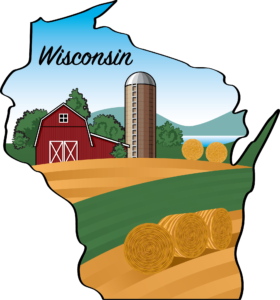Wisconsin Agriculture Facts:

Agriculture is essential to the success of Wisconsin. In our state, agriculture contributes $104.8 billion annually to the economy. Wisconsin is home to more than 64,900 farms which grow and raise a diverse array of food products ranging from berries to vegetables to milk and cheese. If you want to learn more about Wisconsin agriculture facts, you’ve come to the right place.
While Wisconsin might be known as America’s Dairyland, the state’s agricultural industry is very diverse. Here’s a fun fact about Wisconsin agriculture! Did you know that Wisconsin ranks first in the nation for cranberries, ginseng and dairy goats?
Do you know these other Wisconsin agricultural facts?
More Than Food:
Agriculture impacts us each and every day. From the tires on our cars to the paint brushes we use and beyond, farmers play an important role in our lives. Here are some non-food products that are made possible by farmers:

Agriculture Across Wisconsin:
Interested in learning more about agriculture in your county? The University of Wisconsin-Madison Division of Extension calculates the economic impact of agriculture in each county across Wisconsin. This is an excellent resource to dive deeper into what local farmers are growing and raising.
Want to invite a local farmer to your classroom to speak about agriculture? You can find contact information for local Ag in the Classroom Coordinators and the Wisconsin Ag in the Classroom coordinator on the contact page.


You must be logged in to post a comment.